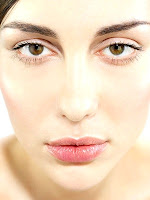
There are ablative procedures in blepharoplasty which include chemical peel and laser surfacing in variety of forms. The wrinkles are blunt by tightening within dermal layer of skin. New collagen is generating in skin surfacing and skin texture is altered. The outermost layer of eyelid skin is know as “Epidermis” and below epidermis is the “Dermis”. A mild oral sedation for anesthesia is required. Skin resurfacing is a destructive technique and performed just after blepharoplasty. Skin resurfacing is a non-surgical and stand alone procedure. After blepharoplasty, chemical is applied using Q-tips on the eyelids. Typically, tricholoacetic acid (TCA) is used for apply on the eyelids. 35% TCA solution is used for skin preparation and cleansing. Alpha- hydroxy acid is used for destructive resurfacing and deeper level of wounding. Chemical peeling must be repeated once a month for 5-6 months for better effect. Generally a single treatment is required for medium-depth peel. This can be accomplished by increasing the concentration of trichloroacetic acid (35-50%). Depth of chemical peeling with more potent chemicals is not predictable. Some surgeons use laser for resurfacing because energy is more controlled.
In laser skin resurfacing beam is directed over the tissue of skin. For stronger effect carbon dioxide laser (CO2) and for weaker erbium YAG laser is used. Sometime both the lasers are used in combination. The blepharoplasty surgeon checks the amount of energy required with the depth of penetration. Most of the surgeons prefer laser skin resurfacing because it is less destructive.

Custom Search
Wednesday, December 12, 2007
Skin Resurfacing After Blepharoplasty
at 3:45 PM